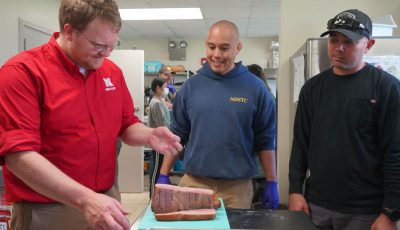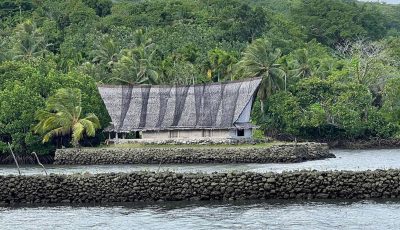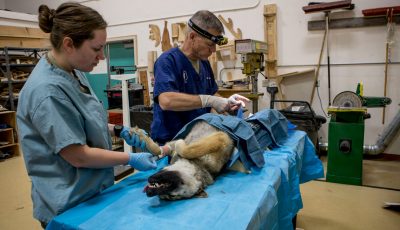‘No action’ alternative for areas outside Tanapag tank sites
A “no action” alternative was considered by the U.S Army Corps of Engineers for their proposed plan for one of their projects involving the Tanapag Fuel Farm.
In a public meeting last Thursday, USACE-Honolulu District (POH) presented their proposed plan and the “no action” as their sole preferred alternative for the area outside of the actual tank area.
The said alternative would not implement a remedial technology or process to reduce or minimize the volume, toxicity, or mobility of chemicals of potential concerns or COPCs at the Tanapag Fuel Farm.
A supplemental remedial investigation done at the fuel farm in 2014 and 2015 addressed 13 above-ground storage tank sites in Tanapag and four AST sites in Sadog Tasi as well as three groundwater monitoring wells and samples were analyzed for total petroleum hydrocarbons as diesel, motor and gasoline oil, semi-volatile organic compounds, volatile organic compounds, and metals such as chromium and lead, among others.
POH’s report states that TPH exceeded its diesel and motor oil ESLs at Tanks 5C, 17, and 38 and several samples at AST sites 5C and 17 exceeded the Pacific Basin ESL for benzo(a)pyrene and dibenz(a,h)anthracene. However, their human health risk assessment reported that there are no risks to human health.
“The cancer risk from on-site COPC is within or below the acceptable risk management range of 1×10-4 to 1×10-6 at the above-ground storage tank sites, the total non-cancer hazard for al receptors is below the EPA hazard index of 1, and all soil metals exposure point concentrations are below applicable unrestricted-land-use Pacific Basin environmental screening levels,” POH said.
POH added that the alternative was screened against the U.S Environmental Protection Agency’s three primary evaluation criteria and that it should also satisfy the EPA modifying criteria for CNMI and community acceptance.
A comment period was opened to the public for the project which will last until April 16.
POH senior program and project manager Helene Takemoto clarified that there are two parts to their Tanapag Fuel Farm, which includes this Hazardouzs, Toxic, and Radioactive Waste Project, and the removal action project that was discussed last January.
“What this project is, it’s outside of the tank area and to see if it leaked elsewhere,”
We had to do it separately because of the way the funding for this program is. Underground-ground storage tanks and above-ground storage tanks, there are funds for that, and the contaminated soil for that, is another separate pot,” Takemoto said.
Another public meeting in April or May for the actual removal of the tanks will be held once the contractor presented their plan to USACE, according to Takemoto.
Once removed, samples will also be taken from the soil within the tank footprints and will be tested as well.
“The tanks, some of them sat on the concrete pad and the only way we can tell is we got to move the tank out, and then move the concrete pad, and then the contractor is supposed to sample to see if it meets with the criteria, the clean up goal and if it doesn’t, they have to take care of the soil,” Takemoto said.
The Tanapag Fuel Farm was built in the mid to late 1940s and was used by the U.S. Navy to provide fuel for ships and aircraft during World War II and through the 1950s, after which up to 42 tanks were abandoned.
In 2006, six tanks were removed from the same site by BECQ and the U.S. Environmental Protection Agency. About 17 tanks remain in the former fuel farm.



























